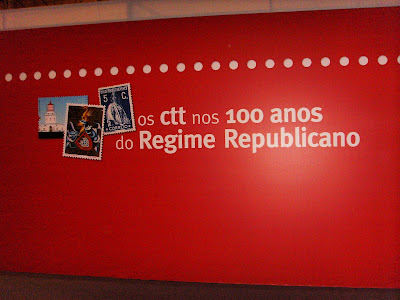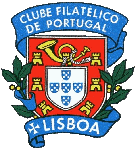 Centennial of the Proclamation of the 1st Republic of Portugal
Centennial of the Proclamation of the 1st Republic of Portugal
Today 5th October, commemorates the centennial of the proclamation of the 1st Republic of Portugal.
http://www.centenariorepublica.pt

Bustos da República
A figura feminina como representação simbólica da República teve enorme divulgação nos primeiros tempos do novo regime político implantado em Portugal em 1910. Com efeito, o busto da República tornou-se mesmo um dos seus símbolos com maior visibilidade, sobretudo quando, a partir de 1912, passou a ser obrigatória a sua colocação em repartições e edifícios públicos e ao ser adoptado, como efígie, para figurar em moedas de grande circulação.
Embora existam muitas versões artísticas de bustos da República, os mais conhecidos e difundidos foram os que obtiveram o 1.º e o 2.º lugares num concurso promovido pela Câmara Municipal de Lisboa, em 1911, com o objectivo de se escolher aquele que deveria passar a ser o «busto oficial». São seus autores, respectivamente, os escultores Francisco dos Santos (1878-1930) e Simões de Almeida Sobrinho (1880-1950).
Os Correios Portugueses, que desde 2007 têm vindo a evocar em selo alguns dos temas mais representativos da efeméride que o País celebra em 2010, propuseram a artistas contemporâneos que efectuassem uma reinterpretação livre do busto tradicional da República. A presente emissão traduz o resultado de tal repto (com reprodução das criações artísticas da autoria de André Carrilho, Bento Condado, Costa Pinheiro, João Abel Manta, João Machado, Júlio Pomar e Luís Macieira), e inclui ainda uma cópia da peça «histórica», assinada por Francisco Santos, vencedor do concurso público de 1911. Embora tenha caído em desuso, o busto da República ainda hoje é interpretado como personificação do regime republicano, evocando espontaneamente os seus valores e mais nobres ideais, sintetizados no lema-programa inspirador da Revolução Francesa: liberdade, igualdade, fraternidade. Aliás, a própria escolha da figura feminina como imagem representativa da República e da Mãe Pátria, se bem que com origens mais longínquas, remete para o exemplo francês, inclusive na adopção dos seus atributos, designadamente o barrete frígio e o ramo de louros, ícones da Liberdade e da Vitória e também eles de ressonâncias históricas remotas.
Busts of the Republic
The female figure as a symbolic representation of the Republic had huge publicity in the early days of the new political regime implemented in Portugal in 1910. Indeed, the bust of the Republic has even become one of its most visible symbols, especially when, from 1912 it became mandatory to put in offices and public buildings and be adopted as effigy, to appear in coins for general circulation.
Although there are many versions of artistic busts of the Republic, the most popular and widespread were the ones that achieved the first. And 2nd. Th place in a competition sponsored by the city of Lisbon in 1911 with the aim of choosing who should go to be the 'official bust'. Their authors are, respectively, sculptors Francisco dos Santos (1878-1930) and Simões de Almeida Sobrinho (1880-1950).
The Portuguese Post Office, which since 2007 have come to evoke seal some of the most representative of the country celebrates anniversary in 2010, proposed the contemporary artists free effecting a reinterpretation of traditional bust of the Republic. This issue reflects the outcome of such a feat (with reproduction of the artistic creations by André Carrilho, Benedict County, Costa Pinheiro, João Abel Manta, John Machado, Luis Julio Pomar and Apple Tree), and includes a copy of the play "historical ', signed by Francisco Santos, who won the tender of 1911. Although it has fallen into disuse, the bust of the Republic is still interpreted as a personification of the Republican regime, spontaneously evoking its noblest ideals and values, summarized in the slogan-inspiring program of the French Revolution: liberty, equality, fraternity. Indeed, the very choice of the female figure as an image representative of the Republic and the Fatherland, though with more distant sources, refers to the example of France, including the adoption of its attributes, namely the Phrygian cap and laurel branch, icons Liberty and Victory, and they too remote from historical echoes.
Dados Técnicos
Obliterações do 1º dia em:
Oblitérations du 1er jour à:
First day obliterations in:
Lisboa / Porto / Funchal / Ponta Delgada
Emissão / émission / issue:
2010 / 06 / 24
Folhas / feuilles / sheets:
Com 8 ex. com tiragem de 180 000/ avec 8 ex. / with 8 copies
Selos / timbres-post / stamps:
5 X € 0,32
2 X€ 0,68
€ 0,80
Autores:André Carrilho, Bento Condado, Costa Pinheiro, Francisco dos Santos, João Abel Manta, João Machado, Júlio Pomar, Luís Macieira
Design: Atelier Acácio Santos / Hélder Soares
Fotos / Photos: Júlio Marques
Papel / papier / paper FSC: 110g / m2
Formato / format / size:
Selos / timbres / stamps: 30,6 x 40 mm
Picotagem / dentelure / perforation:
13 x Cruz de Cristo / Croix du Christ / Cross of Christ
Impressão / impression / printing: offset Impressor / imprimeur / printer: CARTOR
 Cover with stamps of the issues ‘Papillon - Morpho bleu‘ and ‘Pont Aqueduc d'Arcueil Cachan’ plus six definitive stamps ‘Marianne et l'Europe’ issued in 2009 posted on September, 27 2010. (A very special thanks to my friend Yu Kitaev from Russia)
Cover with stamps of the issues ‘Papillon - Morpho bleu‘ and ‘Pont Aqueduc d'Arcueil Cachan’ plus six definitive stamps ‘Marianne et l'Europe’ issued in 2009 posted on September, 27 2010. (A very special thanks to my friend Yu Kitaev from Russia)
 Papillon - Morpho bleu
Papillon - Morpho bleu Pont Aqueduc d'Arcueil CachanClassified historic monument, the aqueduct of Arcueil-Cachan consists of three successive titles. The first, dating from the Gallo-Roman Wissous fed from Rungis and the baths of Lutetia (Cluny), there are only two blocks of masonry, but his journey underground is well known. The second, the Medici aqueduct, built in stone in the seventeenth century to feed the Left Bank of Paris and especially the Luxembourg Palace built at the request of Marie de Medici. The third, the Vanne aqueduct, built in rubble by the engineer Eugene Belgrand the nineteenth century, rests on the Medici aqueduct and leads the waters of the valve (a tributary of the Yonne) to tanks Paris Montsouris. With a length of 990 m, the aqueduct has 77 arches of 10 m wide, has a height of 38 m at the lowest point of the valley. Always On, with a capacity of 145,000 m³ / day, the aqueduct supplies nearly a third of Paris.
Pont Aqueduc d'Arcueil CachanClassified historic monument, the aqueduct of Arcueil-Cachan consists of three successive titles. The first, dating from the Gallo-Roman Wissous fed from Rungis and the baths of Lutetia (Cluny), there are only two blocks of masonry, but his journey underground is well known. The second, the Medici aqueduct, built in stone in the seventeenth century to feed the Left Bank of Paris and especially the Luxembourg Palace built at the request of Marie de Medici. The third, the Vanne aqueduct, built in rubble by the engineer Eugene Belgrand the nineteenth century, rests on the Medici aqueduct and leads the waters of the valve (a tributary of the Yonne) to tanks Paris Montsouris. With a length of 990 m, the aqueduct has 77 arches of 10 m wide, has a height of 38 m at the lowest point of the valley. Always On, with a capacity of 145,000 m³ / day, the aqueduct supplies nearly a third of Paris.






































































.png)





































